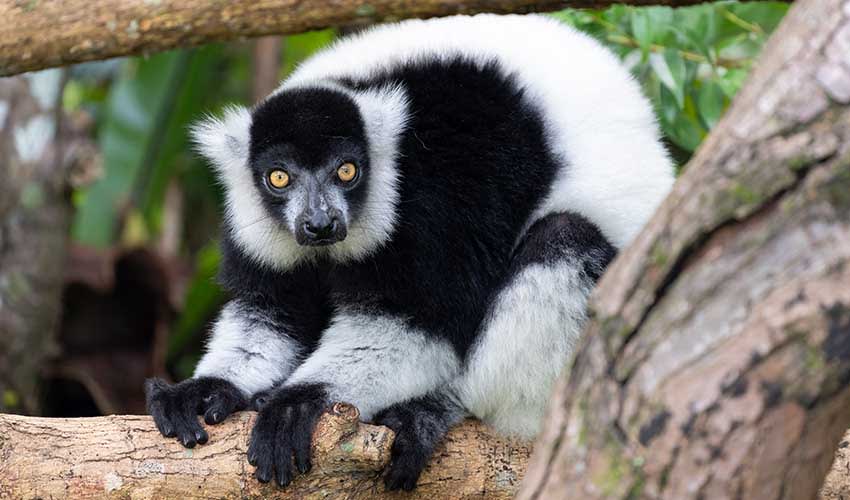One of Madagascar’s most spectacular primates, famous for its dramatic appearance, loud calls, and important role as a “forest gardener.” Endemic to the eastern rainforests of Madagascar, this lemur is not just one of the largest members of the lemur family but also one of the most striking. With its bold patches of black and white fur, fluffy ruff around the neck, and long, bushy tail, it is as eye-catching as it is ecologically significant.
Its fur is thick and luxuriously soft, with sharply contrasting black and white markings that vary between individuals, making each lemur’s coat unique—almost like a fingerprint. The most distinctive feature, however, is the ruff of long fur around its neck, which puffs out like a mane and enhances its striking appearance.
Black-and-white ruffed lemurs are primarily frugivorous, meaning they rely heavily on fruit. They also consume nectar, flowers, and leaves, but fruit can make up as much as 75% of their diet. Because of this, they are considered one of Madagascar’s most important seed dispersers. In fact, studies show that they can swallow large seeds whole and deposit them far away, making them crucial to forest regeneration. Without lemurs like these, many rainforest trees would struggle to reproduce effectively.
Socially, these lemurs are highly vocal and active, living in groups of 2–16 individuals. Their loud, barking calls can carry for kilometers through the forest, helping groups stay in touch across large distances. Unlike many other lemurs, they show flexible group structures, with members sometimes splitting into smaller foraging parties. Females tend to dominate males, a common trait among lemurs.
Distribution
 Madagascar
Madagascar Official estimate
Official estimate
Anything we've missed?
Help us improve this page by suggesting edits. Glory never dies!
Suggest an editGet to know me
Terrestrial / Aquatic
Altricial / Precocial
Polygamous / Monogamous
Dimorphic (size) / Monomorphic
Active: Diurnal / Nocturnal
Social behavior: Solitary / Pack / Herd
Diet: Carnivore / Frugivore / Omnivore / Piscivorous / Insectivore
Migratory: Yes / No
Domesticated: Yes / No
Dangerous: Yes / No




